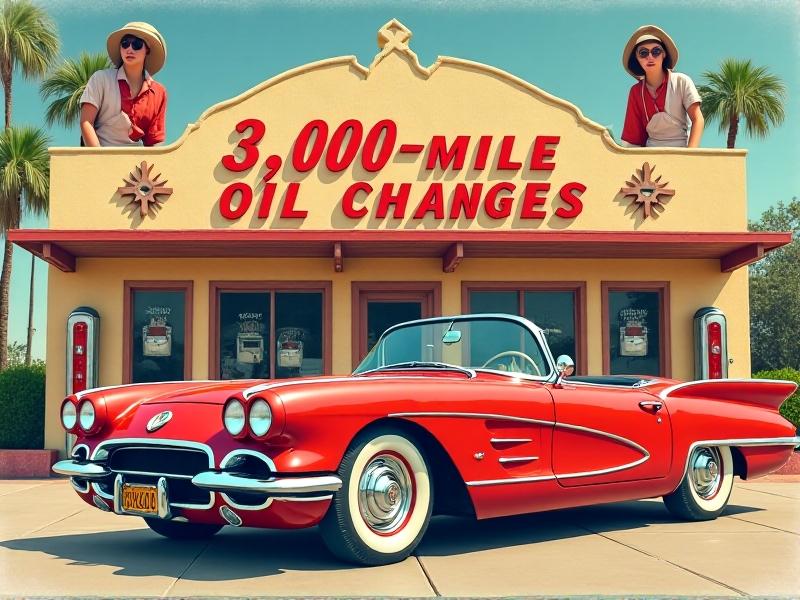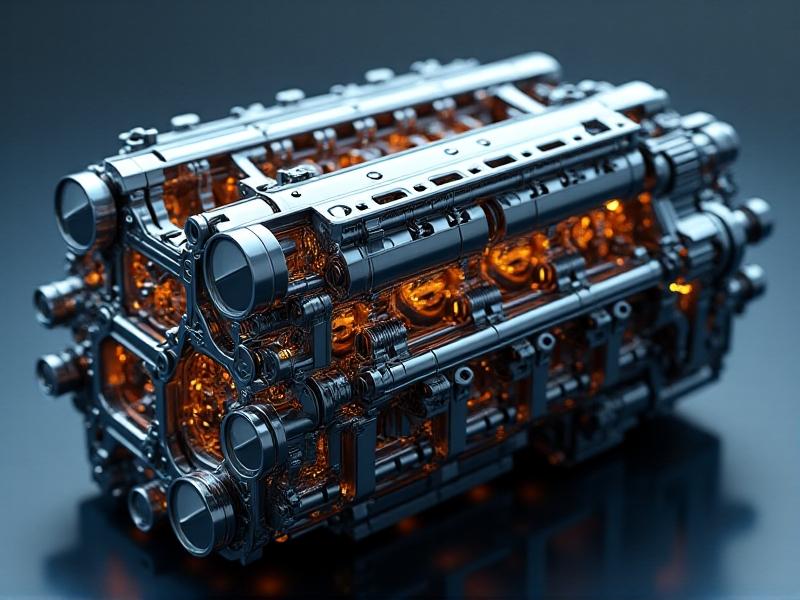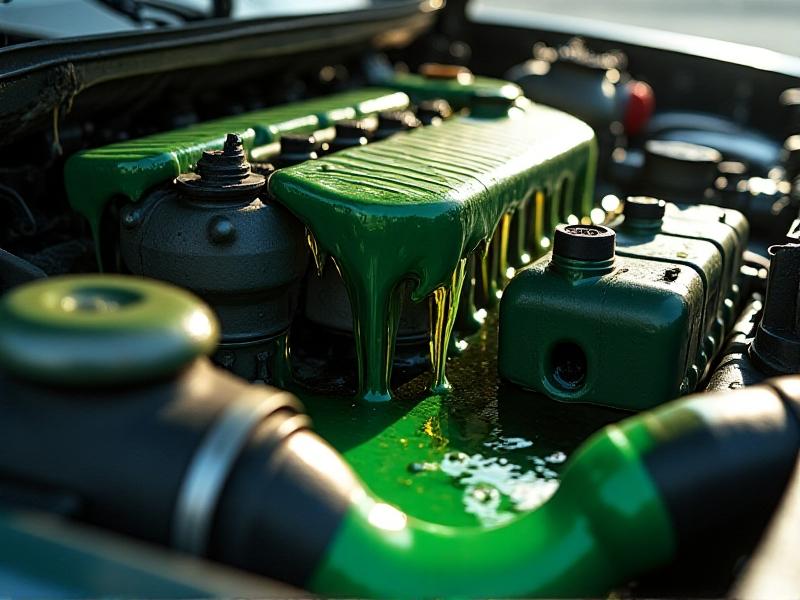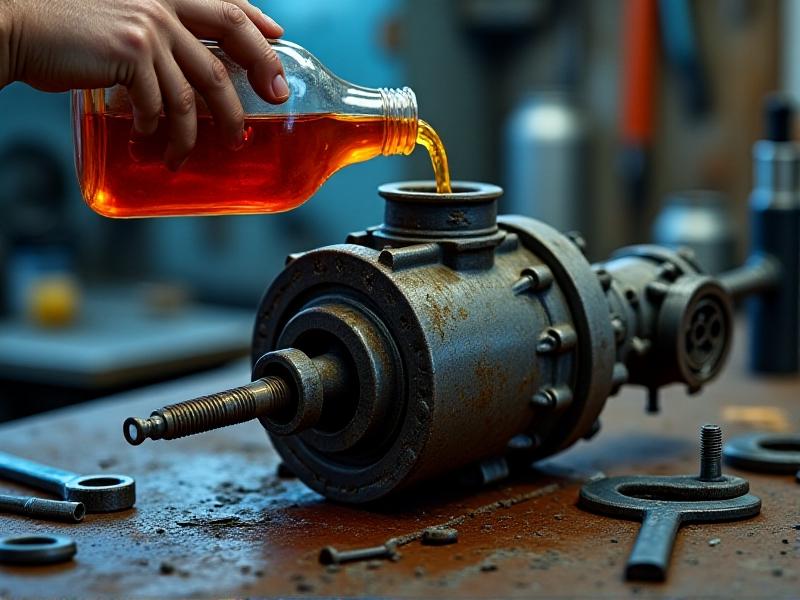```html
The Origins of the 3,000-Mile Myth: Why This Rule Persists

The 3,000-mile oil change recommendation has roots in mid-20th-century automotive engineering. During the 1950s and 1960s, engines relied on simpler designs and less refined conventional oils, which broke down faster under heat and stress. Oil change shops and manufacturers perpetuated this interval as a "safe" guideline, embedding it into maintenance manuals and advertising campaigns. Over time, it became a cultural norm, despite advancements that rendered it outdated.
Even as technology evolved, the myth persisted due to its profitability for quick-lube businesses and the psychological comfort it offered drivers. Many still associate frequent oil changes with responsible car ownership, unaware that modern engines and lubricants operate far more efficiently.
Engine Technology Advancements: How Modern Cars Redefine Oil Longevity

Today’s engines are marvels of precision engineering. Tighter tolerances between moving parts reduce friction, while advanced materials like aluminum alloys and ceramic coatings withstand higher temperatures. Direct fuel injection and variable valve timing optimize combustion, reducing sludge buildup. These innovations mean less wear on oil, allowing it to maintain viscosity and protective properties longer.
Manufacturers now design engines with oil longevity in mind. For example, some Toyota and Honda models recommend intervals up to 10,000 miles, relying on synthetic oils and improved filtration systems. The gap between outdated advice and reality grows wider each year.
Synthetic vs. Conventional Oil: Why the Type of Oil Matters More Than Ever

Synthetic oil, engineered from chemically modified petroleum components or entirely artificial compounds, outperforms conventional oil in nearly every metric. Its molecular uniformity provides consistent lubrication across extreme temperatures, while additives combat oxidation and deposit formation. Mobil 1 and similar synthetics can last 15,000 miles or more in ideal conditions.
Conventional oil, derived from crude with minimal processing, lacks these tailored properties. It degrades faster under heavy loads or high heat, making it ill-suited for modern turbocharged engines or hybrid vehicles that frequently cycle between electric and gas power.
Driving Habits and Conditions: The Hidden Factors That Determine Oil Life

Short trips, towing, and extreme temperatures accelerate oil degradation. Stop-and-go driving prevents the engine from reaching optimal operating temperature, allowing fuel and moisture to contaminate the oil. Conversely, highway driving at steady speeds minimizes stress, extending oil life. Manufacturers often define "severe" conditions as frequent idling, dusty environments, or sub-freezing climates—all warranting shorter intervals.
For example, Ram recommends 6,000-mile changes for trucks frequently hauling heavy loads, while the same engine might go 8,000 miles under lighter use. Understanding your driving patterns is key to optimizing intervals.
Oil Monitoring Systems: How Your Car’s Computer Knows Best
Most post-2010 vehicles use algorithm-based oil life monitoring systems (OLMS) that track engine load, RPM, temperature, and mileage. GM’s Oil Life System, for instance, analyzes data from dozens of sensors to calculate remaining oil efficacy, often stretching intervals beyond 7,500 miles. These systems eliminate guesswork, adapting recommendations to real-world use.
However, OLMS isn’t infallible. It doesn’t measure oil quality directly, so contamination from a faulty head gasket or excessive idling can skew results. Pairing the system with periodic manual checks ensures comprehensive care.
Environmental Impact: The Hidden Cost of Over-Maintenance
Unnecessary oil changes contribute to environmental harm. The EPA estimates that 40% of used oil in the U.S. comes from DIY disposals, often improperly dumped. Just one gallon of used oil can contaminate a million gallons of water. Extending intervals reduces waste—if every American followed 7,500-mile cycles, annual oil use would drop by millions of barrels.
Recycling programs mitigate damage, but reducing consumption remains paramount. Synthetic oils, though more energy-intensive to produce, offset this through longevity, creating a net positive over time.
Debunking Common Misconceptions: Separating Fact from Fiction
Myth: Dark oil means it’s time for a change. Reality: Additives clean engines by suspending debris, darkening oil naturally. Myth: All cars can follow 10,000-mile intervals. Reality: High-performance engines like BMW’s M Series may require shorter intervals due to higher operating stresses. Always consult your manual over generic advice.
Another fallacy is that synthetic oil causes leaks in older cars. While swelled seals might shrink after switching, high-mileage synthetics include seal conditioners to prevent this.
Best Practices for Today’s Drivers: Tailoring Oil Changes to Your Needs
Start with your owner’s manual—manufacturers tailor intervals to your specific engine. If you lack OLMS, consider oil analysis kits from companies like Blackstone Labs, which test for contaminants and viscosity. For mixed driving, split the difference between “normal” and “severe” schedules.
Choose oils meeting API SP or ACEA standards, and don’t skimp on filters—premium brands like Wix or Mann Filter trap more particles. Lastly, track maintenance digitally; apps like Fuelly simplify logging intervals and conditions.



